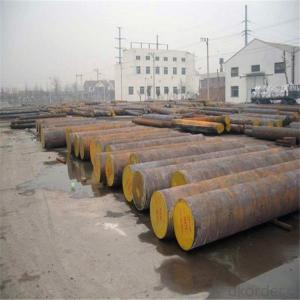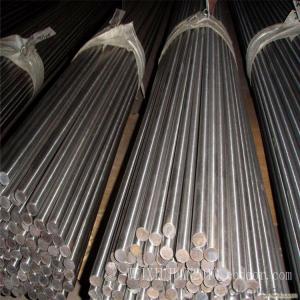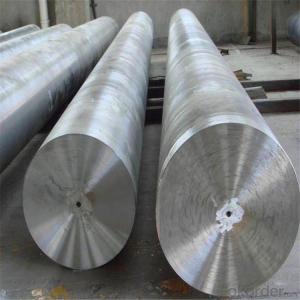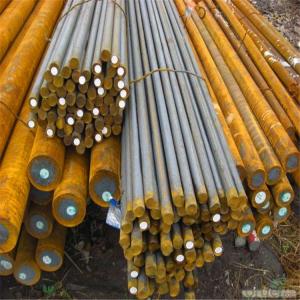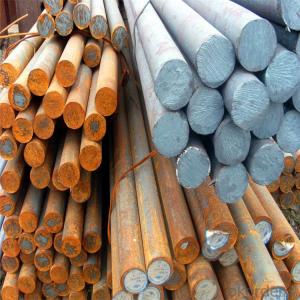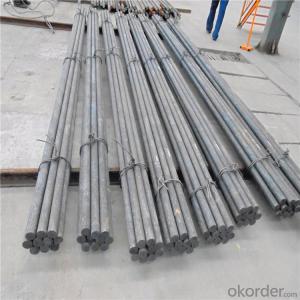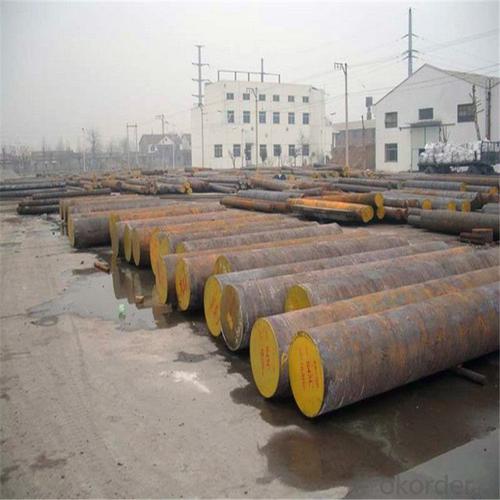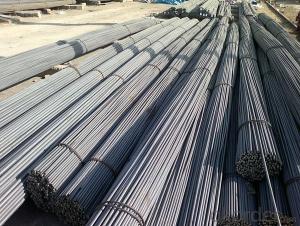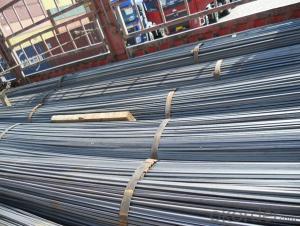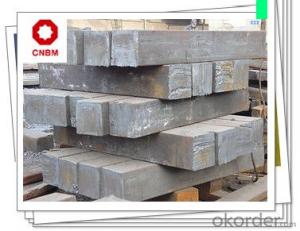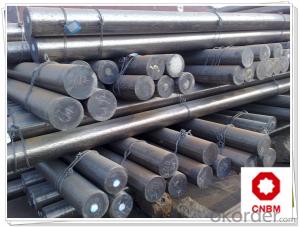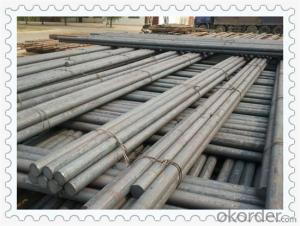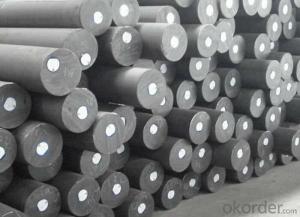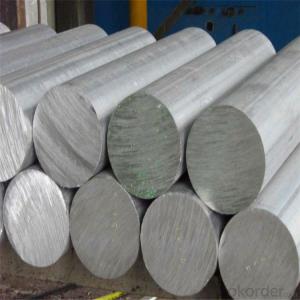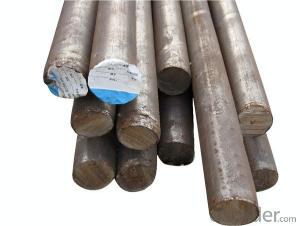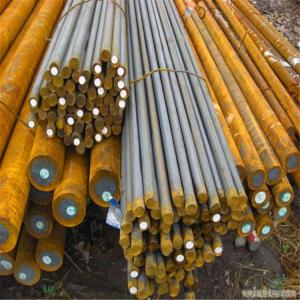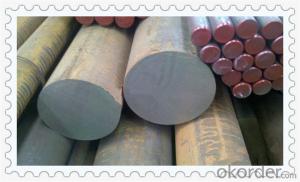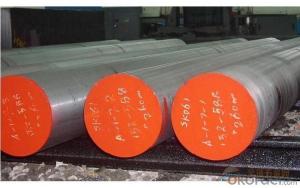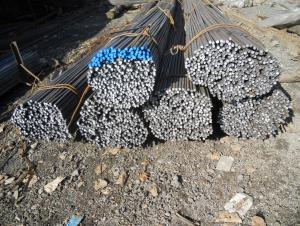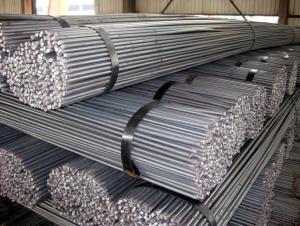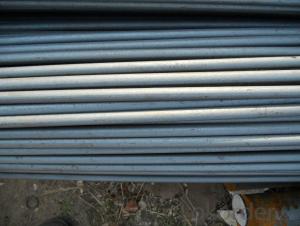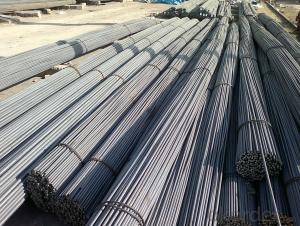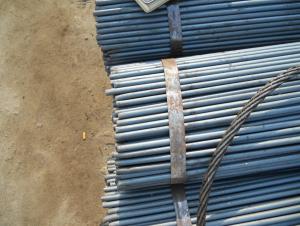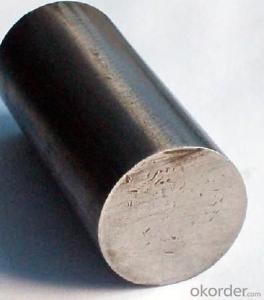MS Mild Steel SAE1020 Hot Rolled Round Bar
- Loading Port:
- Tianjin
- Payment Terms:
- TT OR LC
- Min Order Qty:
- 25 m.t.
- Supply Capability:
- 500000 m.t./month
OKorder Service Pledge
OKorder Financial Service
You Might Also Like
Specification
MS Mild Steel SAE1020 Hot Rolled Round Bar
Product Description of MS Mild Steel SAE1020 Hot Rolled Round Bar
1. Steel grade: SAE1020, 20#, C22, S20C
2. Length: 6M-12M
3. Diameter: 16mm-300mm
4. Product range: round bar, flat bar, square bar
5. Technique: Hot rolled, forged, cold drawn
Specification of MS Mild Steel SAE1020 Hot Rolled Round Bar
Material | SAE 1020 | Round bar | Dia(mm) | 16-300mm |
Process | EAF + LF + VD + Forged + Heat Treatment (optional) | Length (mm) | Max 12m | |
Heat treatment | Normalized / Annealed / Quenched / tempered | Flat bar | Thickness(mm) | 8-500mm |
Delivery condition | Hot forged +Rough machined (black surface after Q/T)+ Turned (optional) | Width(mm) | 70-200mm | |
Test | Ultrasonic test according to SEP 1921-84 D/d | Length (mm) | Max 12m |
Chemical Composition of MS Mild Steel SAE1020 Hot Rolled Round Bar
C | Si | Mn | Cr | Ni | Cu |
0.17~0.23 | 0.17~0.37 | 0.35~0.65 | ≤0.25 | ≤0.30 | ≤0.25 |
Photo Show of MS Mild Steel SAE1020 Hot Rolled Round Bar
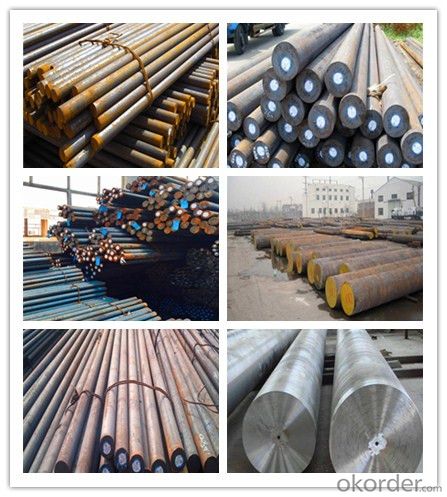
Packing and Delivery:
Packing in bundle package, or as customer's requirements.
Delivery Detail: 45 days after receiving the deposit.
Usage and Applications of MS Mild Steel SAE1020 Hot Rolled Round Bar
1. Steel round bar is used in a large number of architectural and engineering structures. Or it can be used in construction of plants for the production of steel house frames, high-voltage transmission towers, bridges, vehicles, boilers, containers, ships, etc.
2. And we can use this kind of product on the performance of the mechanical parts if the demand is not very high.
3. Some special material steel round bar can be used for main shaft of steamer, hummer shank, with big section and supper force.
Company Information
CNBM International Corporation is the most important trading platform of CNBM group.
Whith its advantages, CNBM International are mainly concentrate on Cement, Glass, Iron and Steel, Ceramics industries and devotes herself for supplying high qulity series of refractories as well as technical consultancies and logistics solutions.

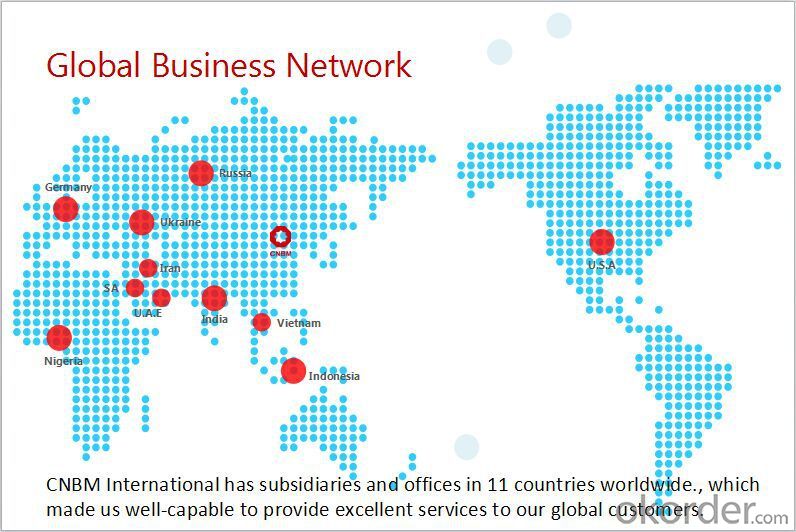
F A Q
1, Your advantages?
professional products inquiry, products knowledge train (for agents), smooth goods delivery, excellent customer solution proposale
2, Test & Certificate?
SGS test is available, customer inspection before shipping is welcome, third party inspection is no problem
3, Factory or Trading Company?
CNBM is a trading company but we have so many protocol factories and CNBM works as a trading department of these factories. Also CNBM is the holding company of many factories.
4, Payment Terms?
30% TT as deposit and 70% before delivery.
Irrevocable L/C at sight.
5, Trading Terms?
EXW, FOB, CIF, FFR, CNF
6, After-sale Service?
CNBM provides the services and support you need for every step of our cooperation. We're the business partner you can trust.
For any problem, please kindly contact us at any your convenient time.
We'll reply you in our first priority within 24 hours.
- Q: How do steel round bars perform under static or stationary loads?
- Steel round bars are renowned for their exceptional performance when subjected to static or stationary loads. With their high level of strength and durability, steel round bars have the ability to endure heavy weights or forces without experiencing significant deformation or failure. When faced with static loads, these bars evenly distribute the applied force throughout their structure, guaranteeing stability and maintaining structural integrity. One of the primary benefits of steel round bars is their resistance to bending or sagging under static loads. Their inherent rigidity enables them to preserve their shape and prevent substantial deflection, rendering them ideal for applications that require significant load-bearing capacity. Additionally, steel round bars possess a high yield strength, granting them the capability to withstand substantial stress before permanent deformation takes place. Moreover, steel round bars exhibit minimal creep under static loads, signifying that they maintain their shape and dimensions over time, even when exposed to sustained pressure. This attribute proves particularly vital in structures or equipment that are expected to support constant loads for extended durations. Another element that contributes to the outstanding performance of steel round bars under static loads is their resistance to corrosion. Steel inherently resists rust and oxidation, rendering it suitable for use in various environments, including those with high levels of humidity or exposure to moisture. In conclusion, steel round bars are exceedingly dependable and efficient when it comes to managing static or stationary loads. They offer exceptional strength, resistance to deformation, and durability, making them the preferred choice across a wide array of industries, such as construction, manufacturing, and infrastructure development.
- Q: Can steel round bars be used in the production of power tools?
- Yes, steel round bars can be used in the production of power tools. Steel is a durable and strong material that is commonly used in the manufacturing of various tools and machinery, including power tools. Steel round bars can be used to create the body, handles, and other components of power tools, providing stability, strength, and longevity. The steel used in power tools is often selected for its high tensile strength and resistance to wear and tear. Additionally, steel can be easily machined, allowing for precise shaping and customization of power tool components. Overall, steel round bars are a suitable choice for the production of power tools due to their strength, durability, and versatility.
- Q: Can steel round bars be used for making wire?
- Steel round bars are capable of being utilized for the production of wire. A technique known as wire drawing is employed to convert steel round bars into wire. This method involves pulling the steel round bar through a succession of progressively smaller dies in order to decrease its diameter until it achieves the desired wire size. This technique is widely employed in the manufacturing of different wire types, such as steel wire used in construction, electrical wiring, fencing, and other diverse applications. Typically, the steel round bars employed for wire production are crafted from carbon steel, which imparts the requisite strength and longevity for the wire to fulfill its various purposes.
- Q: Can steel round bars be used for making power transmission systems?
- Yes, steel round bars can be used for making power transmission systems. Steel round bars possess high strength and durability, making them suitable for transmitting power in various applications such as gears, shafts, and couplings.
- Q: How do you straighten a bent steel round bar?
- To straighten a bent steel round bar, there are a few simple steps you can follow: 1. Assess the bend: Determine the severity and location of the bend in the round bar. This will help you choose the appropriate method for straightening it. 2. Heat the bar: If the bend is not too severe, you can use a blowtorch or forge to heat the bar. Apply heat evenly to the bent area until it turns red hot. Heating the bar will make it more flexible and easier to straighten. 3. Apply pressure: Once the bar is heated, you can use a vice or hydraulic press to apply pressure to the bent section. Gradually increase the pressure until the bar starts to straighten. Be cautious not to exert excessive force, as it may cause the bar to break. 4. Utilize leverage: If the bend is not too severe, you can also straighten the bar by using leverage. Secure one end of the bar in a vice or clamp and apply force to the bent section in the opposite direction. Slowly and gently increase the force until the bar straightens. 5. Cold bending: If the bend is minor, you may be able to straighten the bar without applying heat. This method involves using a hammer or mallet to lightly tap the bent area in the opposite direction until it becomes straight. Be careful not to strike the bar too forcefully, as it may create new bends or fractures. 6. Check for straightness: After applying the straightening method, carefully examine the bar to ensure it is straight. If there are any remaining bends, repeat the process until the bar is completely straight. Always remember to wear appropriate safety gear, such as gloves and eye protection, when working with steel bars. If you are uncertain about the straightening process or if the bar is severely bent, it is advisable to seek guidance from a professional.
- Q: How do you calculate the maximum allowable stress for a steel round bar?
- To calculate the maximum allowable stress for a steel round bar, you need to determine the material's yield strength and apply a safety factor. The formula is: Maximum Allowable Stress = Yield Strength / Safety Factor. The safety factor typically depends on the application and industry standards.
- Q: What are the different types of steel round bars used in the marine industry?
- Various applications in the marine industry require the use of different types of steel round bars. These round bars are specifically designed to withstand the challenging marine environment and offer high strength and resistance to corrosion. 1. Stainless Steel Round Bars: Due to their exceptional corrosion resistance, stainless steel round bars are extensively used in the marine industry. They can endure saltwater, acids, and other corrosive elements commonly found in the marine environment. Marine fittings, fasteners, and propeller shafts are among the common uses for stainless steel round bars. 2. Carbon Steel Round Bars: Known for their durability and high strength, carbon steel round bars find application in various marine fields such as shipbuilding, offshore structure construction, and marine equipment fabrication. Different grades of carbon steel round bars are available, with higher carbon content providing increased strength and hardness. 3. Alloy Steel Round Bars: Mechanical properties of alloy steel round bars are enhanced by combining various elements like chromium, nickel, and molybdenum with carbon steel. These bars offer excellent strength, toughness, and resistance to corrosion. Marine shafts, gears, and structural components typically make use of alloy steel round bars. 4. Duplex Stainless Steel Round Bars: Combining the properties of austenitic and ferritic stainless steels, duplex stainless steel round bars offer superior corrosion resistance and high strength, making them ideal for marine applications. Offshore platforms, marine vessels, and underwater equipment often utilize duplex stainless steel round bars. 5. Nickel Alloy Round Bars: Nickel alloy round bars are particularly notable for their exceptional resistance to corrosion and ability to withstand high-temperature environments. They are crucial in marine applications where strength, durability, and resistance to corrosive elements are essential. Marine valves, pumps, and heat exchangers frequently employ nickel alloy round bars. Each type of steel round bar used in the marine industry possesses its own unique properties and advantages. The selection of the appropriate steel round bar depends on the specific requirements and application of the marine project.
- Q: What are the advantages of using weather-resistant steel round bars?
- Weather-resistant steel round bars have numerous benefits. Firstly, they are specifically designed to withstand harsh weather conditions, such as corrosion, rust, and degradation caused by rain, snow, humidity, and saltwater environments. This makes them ideal for outdoor applications like construction projects, marine structures, and coastal infrastructure. Secondly, weather-resistant steel round bars eliminate the need for extra protective coatings or treatments. Unlike regular steel, which requires frequent maintenance and painting to prevent rust and corrosion, these bars develop a natural protective layer called patina. This patina acts as a barrier against further corrosion, reducing maintenance requirements and extending the material's lifespan. Thirdly, these bars offer exceptional strength and durability. They are manufactured with a special alloy composition that enhances their mechanical properties, making them highly resistant to impact, bending, and fatigue. This makes them perfect for structural applications in bridges, building frameworks, and heavy machinery. Additionally, weather-resistant steel round bars have aesthetic advantages. The unique patina that forms on their surface gives them an attractive reddish-brown color, adding a visually appealing element to architectural and design purposes. Lastly, the use of weather-resistant steel round bars contributes to sustainability and cost-effectiveness. Their long lifespan and low maintenance requirements make them a more sustainable option compared to traditional steel. While the initial investment may be higher, the long-term savings in maintenance and replacement costs make them a cost-effective choice in the long run. In conclusion, the benefits of using weather-resistant steel round bars include their ability to withstand harsh weather conditions, eliminate the need for additional protective coatings, provide exceptional strength and durability, offer aesthetic appeal, and contribute to sustainability and cost-effectiveness.
- Q: What is the weight of a steel round bar?
- The weight of a steel round bar depends on its dimensions, specifically its diameter and length. To calculate the weight, you can use the formula: weight = volume × density. To find the volume of the steel round bar, you can use the formula for the volume of a cylinder: volume = π × (diameter/2)^2 × length, where π is a mathematical constant approximately equal to 3.14159. The density of steel varies depending on the type and grade, but it is typically around 7.85 grams per cubic centimeter (g/cm³) or 7850 kilograms per cubic meter (kg/m³). By substituting the appropriate values into the formula, you can calculate the weight of the steel round bar in the desired unit (grams, kilograms, pounds, etc.).
- Q: 20# difference between round bar and A3 round bar, can they be used separately?
- The first floor of the answer is lame, 20 is a low carbon steel, low carbon steel is A3, and the two carbon content are equivalent, both mechanical properties are equivalent, but they are not the same, the 20 steel is high quality carbon steel, carbon structural steel is A3, not to see the difference. 20 steel better quality, chemical composition, impurity content control are better, and A3 to casually, so if you only occasionally used, that is no problem, if often use, it is a better consistency of 20 steel
Send your message to us
MS Mild Steel SAE1020 Hot Rolled Round Bar
- Loading Port:
- Tianjin
- Payment Terms:
- TT OR LC
- Min Order Qty:
- 25 m.t.
- Supply Capability:
- 500000 m.t./month
OKorder Service Pledge
OKorder Financial Service
Similar products
Hot products
Hot Searches
Related keywords
